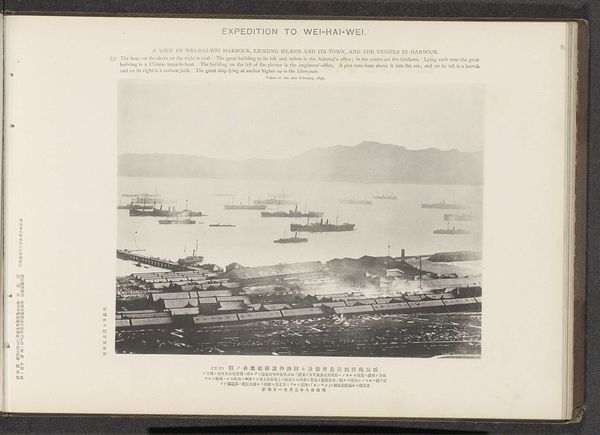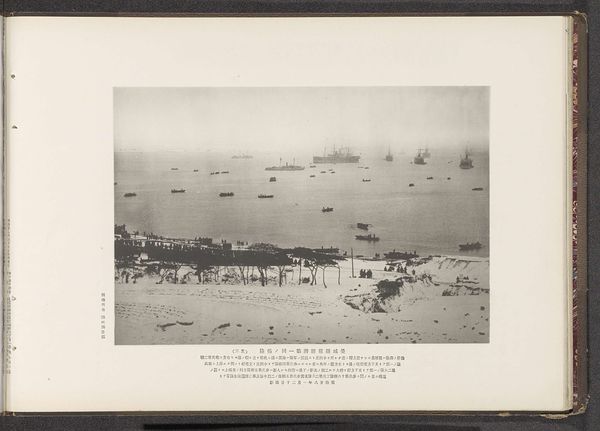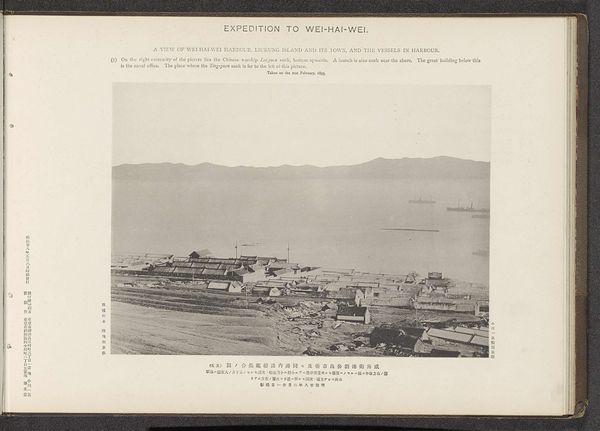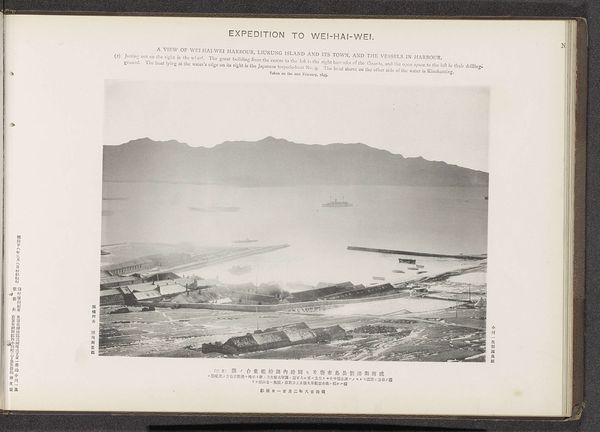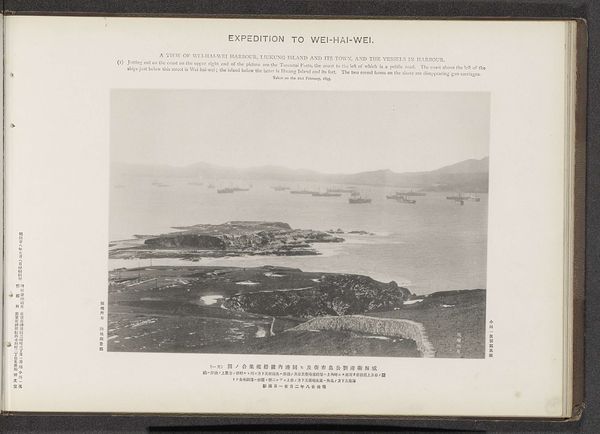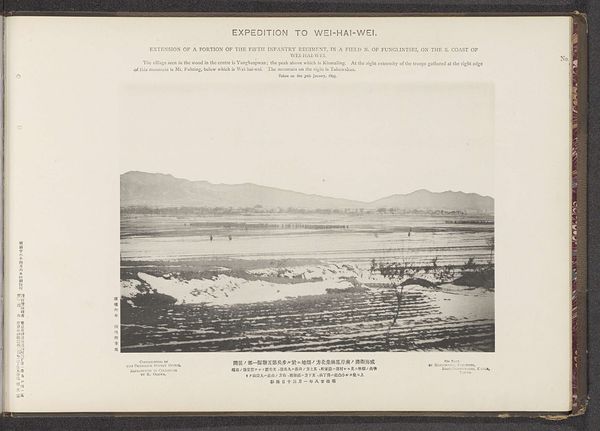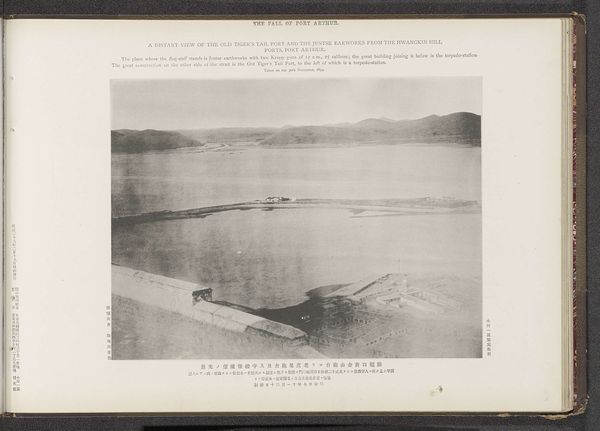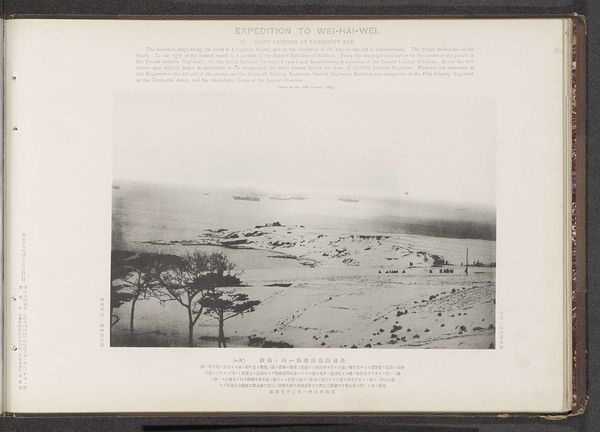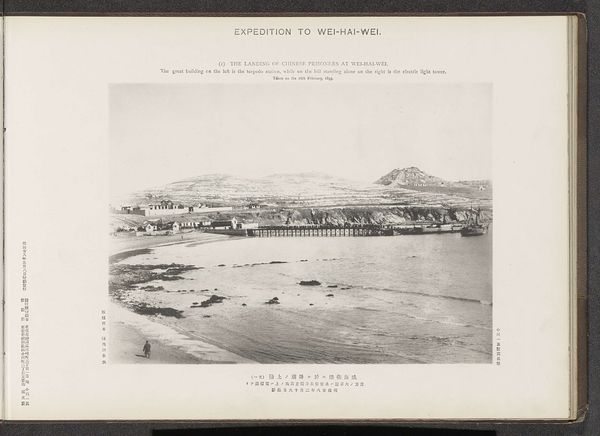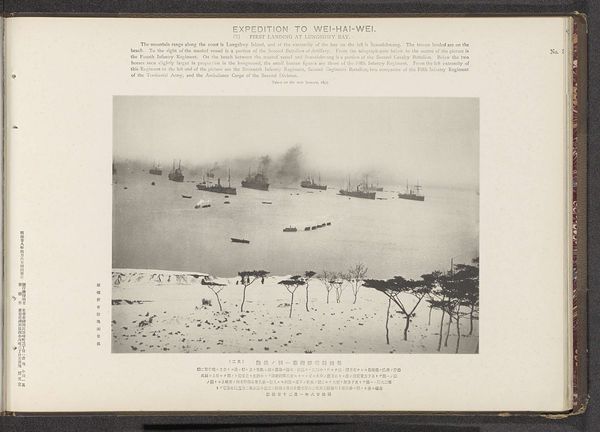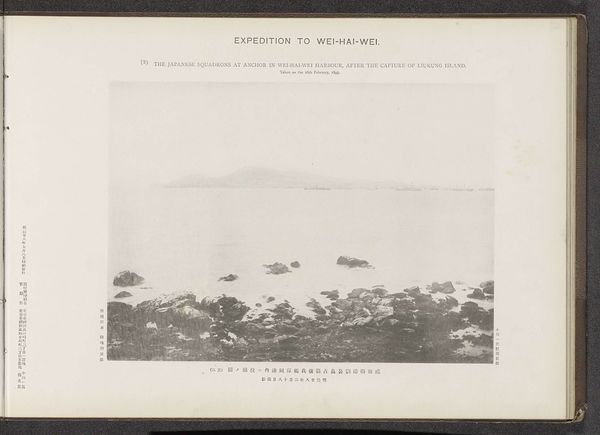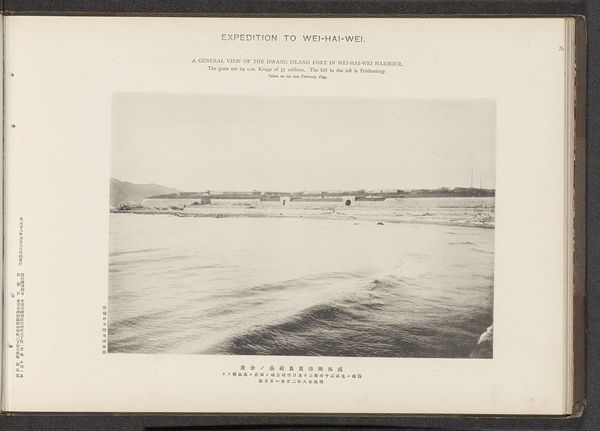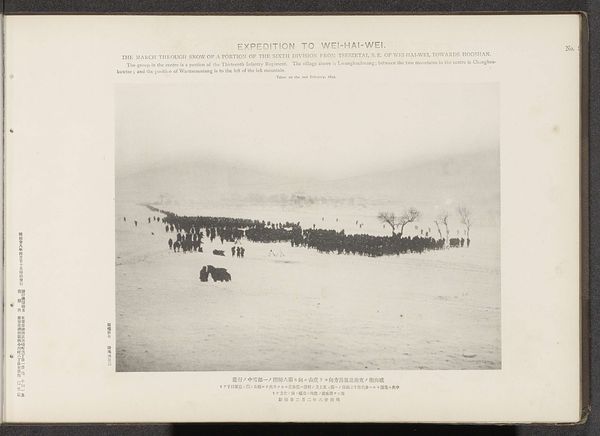
A view of Wei-Hai-Wei harbour, Liukung Island and its town, and the vessels in harbour Possibly 1895
0:00
0:00
print, photography
# print
#
landscape
#
photography
#
orientalism
#
cityscape
Dimensions: height 207 mm, width 263 mm
Copyright: Rijks Museum: Open Domain
Curator: This image, likely from 1895, presents a view of Wei-Hai-Wei harbour, Liukung Island, and the vessels harboured there. It's a photographic print, possibly taken by the Ordnance Survey Office. Editor: The immediate impression is one of immense stillness, despite the many ships dotting the water. The composition, with the rooftops taking up nearly half the frame, lends it a curious sense of containment. Curator: The photographic printing emphasizes a stratified composition, delineating architecture, naval vessels, and the misty coastline with clarity. Note how light and shadow play across the roofs, defining form with distinct contrast, which diminishes in intensity up to the faint outline of the mountain range. Editor: Precisely. This kind of scene--a busy harbour dominated by naval vessels–became heavily laden with symbolic meaning in the late 19th century. Each ship is a floating symbol of national power, the crowded harbour suggestive of mercantile ambition and, perhaps, underlying tension between nations. Curator: The arrangement of ships presents an interesting visual cadence—horizontal lines contrasting with the vertical thrust of their masts and smokestacks. It's not merely documentary; the careful positioning gives a certain structural elegance, a deliberate construction of form. Editor: Absolutely. And considering the period, Wei-Hai-Wei itself carries specific cultural weight. It was a strategic port leased by the British not long after this photograph was taken, reflecting colonial aspirations in China at the time. The harbor view then becomes representative of a much larger historical and cultural narrative involving China's interaction with colonial powers. Curator: The formal qualities—the careful arrangement of tonal values and the emphasis on spatial recession—heighten its impact, allowing for engagement with form divorced from any political associations. Editor: I find it difficult to disentangle form and content here. The stillness we initially noted almost has a menacing quality, suggesting the "calm before the storm," mirroring the historical realities about to unfold. It’s a fascinating, potent image. Curator: Yes, perhaps, it gives an insight into different cultural perspectives from an array of political positions, reflecting in an innovative way the visual history in documentary imaging of a specific time.
Comments
No comments
Be the first to comment and join the conversation on the ultimate creative platform.
